宋代筆記 vol.94 帝王的花圃:4887.5萬的鈞窯花盆與清宮鈞窯的宋明之爭 - Emperor's Garden, and the Dating of Imperial Jun Wares.
- SACA
- Oct 4, 2024
- 9 min read
帝王的花圃 - 鈞窯的宋明之爭
Emperor's Garden - A Junyao's fate
2018年,嘉德拍賣通過保稅拍賣的方式,在北京拍賣了一件著名古董商Eskenazi經手的傳世鈞窯花盆,成交紀錄為4880萬人民幣。
在北京拍賣宮廷概念的器物,一直都有不俗的表現,這件Eseknazi鈞窯展覽封面的器物,也自然不在話下,4880萬人民幣是一個好價格。歸根到底,主要原因可能是:1、清宮傳世;2、Eskenazi傳承顯赫;3、耿寶昌老人視頻強和支持。
雖然學界對這類鈞窯的年代一直頗有爭議,一說明代,一說宋代,但也阻擋不了藝術的熱情和買家的決絕。
In 2018, Guardian Auctions sold a heirloom Junyao flowerpot with an impeccable provenance by the renowned antique dealer Eskenazi through an auction in Beijing, with a record sale of RMB 48.8 million.
Auctions in Beijing of objects with a palace concept have always performed well, and this Eseknazi Jun Exhibition cover piece was naturally no exception, with RMB 48.8 million being a good price even by today's standard.
The main reasons may be: 1, the Qing dynasty heritage; 2, Eskenazi heritage prominent; 3, Geng Baochang confidence in his video support.
Although the academic community has been quite controversial about the age of this type of Jun kiln, one said the Ming Dynasty, the other said the Song Dynasty, but also can not stop the enthusiasm of the art and the buyer's determination.
拍賣會中國嘉德2018年秋季拍賣會
年代明初
尺寸H 18.5 cm (7 1/4 in) D 20 cm (7 7/8 in)
成交价: RMB 48,875,000
“六”字(已磨)
建福宮 凝暉堂用
本件拍賣標的處於保稅狀態下
[來源]
1.弗蘭克•卡羅, 盧芹齋繼任者(Frank Caro),美國;
2.亞瑟•M•賽克勒(Arthur M. Sackler),美國;
3.埃斯肯納齊(Eskenazi),英國。
[展覽]
1.1965年,哥倫比亞大學,紐約;
2.中國藝術3500年:亞瑟•M•賽克勒藏中國陶瓷,1987年,以色列博物館,耶路撒冷;
3.鈞窯,2013年,埃斯肯納齊,倫敦。
[出版]
2013年,埃斯肯納齊《鈞窯》,頁 86。
花盆尊式,撇口,束頸,鼓腹,圈足,厚胎厚釉,施釉及底,裹足刮釉。器身通體呈天青色調,器腹及內底泛出淡淡海棠紫暈,口沿及足牆外側釉水稀薄處,淺現胎骨色,底足施釉極薄,視為橄欖綠色。器底於入窯燒制前刻“六”字款(已磨),乾隆朝時加刻“建福宮 凝暉堂用”殿閣款。
與本次拍賣的鈞窯花盆同器型且同刻“六”字的例子有五例,其中三例為天青釉,另外兩例為海棠紫釉。天青釉例一,與本次拍品於2013年共同展出於埃斯肯納齊(Eskenazi)亞洲藝術周鈞窯大展;例二,大維德(Sir Percival David)於1937年購自山中商會,現展於大英博物館;例三,底刻“建福宮 敬勝齋樓下用”,是除本次拍賣的鈞窯花盆外唯一一件刻有殿閣款的“六”字款尊式花盆,現藏於台北故宮博物院。另兩例海棠紫釉的,分別保存於哈佛大學賽克勒美術館,及故宮博物院(北京故宮)。公私收藏中,刻有“建福宮 凝暉堂用”的鈞窯花盆,僅有一例,為一玫瑰紫釉四方式花盆,現藏於台北故宮博物院。
帝王的傳承 (建福宮 - 凝暉堂)
建福宮
帝王的宮殿,英文名都很好聽。建福宮又叫The Palace of Established Happiness,1740年,作為他的一個新的居所,29歲的乾隆命人在紫禁城的西北角修造建福宮。作為一個年輕的皇子,他又曾住在他父親雍正建造的“重華宮”(The Palace of Double Glory),繼位之後,又搬到了“養心殿”(The Hall of Mental Cultivation)。
建造建福宮,乾隆的意圖是建造一個世外桃源,一個暫離繁重公務、帝王職責的娛樂區。花園難免是一個娛樂的核心,營造一個考究的精緻花園變得十分合理 - 建福花園,布滿假山、亭台、小橋流水… 構建一個微觀自然世界,作為中國傳統文人的精神樂園,根深蒂固,有著深遠的歷史。
Jianfu Palace
The Jianfu Palace is a palace of the emperor, with an auspicious meaning, also known as The Palace of Established Happiness, in 1740, the 29-year-old Qianlong ordered the construction of the Palace of Established Happiness in the north-west corner of the Forbidden City as a new residence for him. As a young prince, he lived in the Palace of Double Glory, built by his father, Yongzheng, and then moved to the Hall of Mental Cultivation after his accession to the throne.
In building the Jianfu Palace, Qianlong's intention was to create a paradise, a recreational area temporarily removed from the heavy burden of official duties and imperial responsibilities. Inevitably, the garden was a centre of entertainment, and it made sense to create an elaborate and refined garden - the Jianfu Garden, full of rockeries, pavilions, bridges and waterfalls... a microscopic world of nature that has deep roots and a profound history as a spiritual paradise for the traditional Chinese literati.
凝暉堂
在建福宮中,有兩處地方是乾隆用來賞玩珍寶的,分別是:靜怡軒(The Pavilion of Tranquil Ease),還有凝暉堂(The Hall of Concentrated Radiance)。靜怡軒是建福宮中尤為重要的建築,也就是在這裡,乾隆存放了赫赫有名“乾隆四美”珍藏繪畫,它們分別是《女史箴圖》(大英博物館)、《 瀟湘臥游圖》(東京國立博物館)、《蜀川勝概圖》(弗利爾博物館)、《九歌圖》(國家歷史博物館),其中後三幅來自北宋畫家李公麟。
Ninghui Hall
In the Jianfu Palace, there are two places where Qianlong used to appreciate treasures: The Pavilion of Tranquil Ease and The Hall of Concentrated Radiance. The Pavilion of Tranquil Ease is a particularly important building in the Jianfu Palace, and it was here that Qianlong kept the famous ‘Four Beauties of the Qianlongs’ collection of paintings, which were the ‘Proverbs of the History of a Woman’ (British Museum), the ‘Reclining Tour of Hsiao Hsiang’ (National Museum of Tokyo), the ‘Scenic View of Shu Chuan’ (Freer Museum), and the ‘Nine Songs’ (National Museum of History), the last three of which were the most important of all. The last three paintings are by the Northern Song painter Li Gonglin.
在凝暉堂中,存放著一組極為重要的“三友”主題的繪畫,有十八學士,有宋元明畫家繪制的梅花等,乾隆命名”三友軒“。松竹梅歲寒三友常用來比喻文人雅士的清高節氣,三友圖以象徵常青不老的松、象徵君子之道的竹和象徵冰肌玉骨的梅組成。
所以就是在這個凝暉堂中的三友軒,乾隆度過了許多美好的時光。實際上在他退休後居住的寧壽宮中,也有一處“三友軒”,證明這處地方在他心中的位置極為重要。也就是凝暉堂,乾隆心中最重要的地方,這件鈞窯花盆被珍藏、賞玩,而且不是被一般人,是乾隆本人。
In the Hall of Contemplation, there is a very important group of paintings on the theme of ‘Three Friends’, with eighteen scholars and plum blossoms painted by Song, Yuan and Ming artists, which the Qianlong emperor named the ‘Pavilion of Three Friends’. Pine, bamboo, plum and the three friends of the cold are often used as a metaphor for the elegance of the literati, the three friends of the picture to symbolise the evergreen pine, symbol of the gentleman's way of bamboo and symbol of the icy skin and jade bone of the plum composition.
So it was in this Three Friends Pavilion in the Hall of Concealed Glory that Qianlong spent many good times. In fact, in the Ning Shou Palace, where he lived after his retirement, there was also a ‘Pavilion of Three Friends’, which proved the importance of this place in his heart. It is also the Ninghui Hall, the most important place in Qianlong's heart, where this jiun kiln flowerpot was treasured and admired, not by the general public, but by Qianlong himself.
建福宮在1920年的一場大火中毀滅, 我們現在只能想象凝暉堂中的珍寶,家居陳設,或許其中一個紫檀案上,就擺放著這件凝暉堂用鈞窯花盆。另外一件同款,銘建福宮凝暉堂,在台北故宮博物館。
另外,哈佛大學博物館在1942年接受了一批鈞窯捐贈,現在擁有大量的這類花盆類鈞窯器物(也稱官鈞),其中有一件,也銘有“建福宮 - 三友軒用”。
The Jianfu Palace was destroyed in a fire in 1920, and we can only imagine the treasures in the Hall of Concealed Favour, the furnishings, and perhaps one of the rosewood cases on which this Junjun kiln flowerpot from the Hall of Concealed Favour was placed. Another example of the same type, inscribed in the Hall of Contemplation, is in the National Palace Museum, Taipei.
In addition, the Harvard University Museums in 1942 accepted a number of Jun kiln donations, and now has a large number of such flower pots Jun kiln wares (also known as official Jun), one of which, also inscribed ‘Jianfu Palace - Three Friends Xuan with’.
這批所謂花盆類,清宮舊藏的花盆年代一直有爭議。有宋代說,也有明代說。台北故宮許多器物的定義上,還是保持宋代;ESKENAZI已經定在了明代;而耿寶昌老先生,在看到這件凝暉堂鈞窯的時候,興奮的像小孩子一樣,拍手說:「如果出書,就寫宋。」
This dating of Jun flower pots in the Qing Palace imperial collection has been a subject of controversy, over whether they are Song or Ming Dynasty. Major instituations around the world including ESKENAZI has favored the Ming Dynasty; whereas Geng Baochang, when asked about the dating of the auction piece, excited as a child, clapping his hands and said firmly: Just write, Song Dynasty.
鈞窯花器的宋明之爭
宋代說
中國歷史上,無數典籍因戰亂動蕩永遠失去。許多學術問題之所以難解,正因無法在流傳下來的史料記載、書畫文本中,找到官鈞窯起源的確鑿記載。
一直以來,古董商、收藏家、學者專家都相信,官鈞窯制於北宋末年,乃宋徽宗用來種花,置於御花園「艮岳」以賞奇石、觀名花所用。 1974年,河南省禹州鈞台窯址的考古發掘,亦引證了鈞窯始於宋代之說。
明代說
2004年,深圳考古所在河南省禹州一個藥廠遺址,作搶救式發掘,以瓷片的器形對比,推論官鈞窯是明代初期所制。隨後眾多海外博物館也把年份由宋改為明初。大型拍賣行為保障買賣雙方,也多把官鈞斷代為元末明初。
The Song-Ming Controversy over Jun Kiln Flower Ware
Song Dynasty
In Chinese history, countless books have been lost forever due to war and turmoil. The reason why many academic problems are difficult to solve is that it is impossible to find a solid record of the origins of the Official Jun Kiln in the historical records, paintings and calligraphic texts that have been handed down to us.
For a long time, antique dealers, collectors, scholars and experts have believed that the kiln was made in the late Northern Song Dynasty, and was used by Emperor Huizong of the Song Dynasty to grow flowers, and was placed in the Imperial Garden ‘Burgundy Mountain’ to appreciate the strange stones and view famous flowers. In 1974, the archaeological excavation of the Juntai kiln site in Yuzhou, Henan Province, also proved that the kiln began in the Song Dynasty.
Ming Dynasty
In 2004, the Shenzhen Institute of Archaeology conducted a rescue excavation at the site of a pharmaceutical factory in Yuzhou, Henan Province, and deduced that the kilns were made in the early Ming Dynasty by comparing the shapes of the ceramic pieces. Subsequently, many overseas museums changed the year from Song to early Ming. Large auction houses in order to protect the buyer and seller, but also more of the official kwan to the end of the Yuan Dynasty and the early Ming Dynasty.
哈佛大學博物館
同款器物
哈佛大學藏有同款鈞窯花盆一共八件(其中一件殘器),但沒有一款有帶銘文,所以此次的這件,非常難得。並不是所有的同類的花盆都會被銘刻。
在八件同類品種中,天青色的只有一件,品質亦不如該次成交的品質高。值得注意的是,鈞窯的藍色(天青),並不是自身的藍。它來自釉層跟光的一個光學反射效果,只有藍色的光波被反射:瑞利散射(Rayleigh scattering),這也是為什麼天空是藍色的,這種對雨過天青的理解,從科學上的契合度也是近乎完美。
哈佛大學博物館
銘文器物
重華宮
The Palace of Double Glory
海棠盆
鐘型盆
養心殿
The Hall of Mental Cultivation
菱口盆
花口盆
方盆
建福宮
The Palace of Estalibhed Happiness
菱口盆
花口盆
哈佛大學這批1942年的捐贈,是研究官鈞年代的寶庫,共藏有渣鬥8件,其他各式花盆以及底座43件,共51件之巨量。
不管年代是宋代還是明代,這批器物無疑是帝王的珍寶,他們在乾隆人生的各個階段:凝暉堂時期、養心殿時期、寧壽宮時期都扮演著取悅帝王的精神支撐,是帝王文人情懷的一個寄託,在微縮自然中的情感歸宿。
ESKENAZI先生在2013年的展覽中,特地邀請了著名花藝大師Sumie Takahashi為兩件鈞窯創作了花藝,考究之極,至今仍是我們能看到的最好的對凝暉堂和帝王花圃的想象。
This 1942 donation from Harvard University is a treasure trove for the study of the Official Jun period, with a total of eight jardinières and 43 other assorted flowerpots and pedestals, making a huge collection of 51 pieces.
Regardless of whether the date is the Song or Ming dynasty, these objects were undoubtedly treasures of the emperor, and they played a role in pleasing the emperor's spirit at various stages of his life: during the period of the Hall of Concentration, the period of the Hall of Yangxin, the period of the Palace of Ningshou, and as a spiritual support for the emperor's literati sentiments, an emotional home in the miniature nature of the emperor.
For his 2013 exhibition, Mr ESKENAZI invited Sumie Takahashi, a renowned floral artist, to create floral arrangements for the two pieces of Junjun kiln, which are so elaborate that they are still the best imaginings of the Ningshutang and the Imperial Flower Garden that we can see.













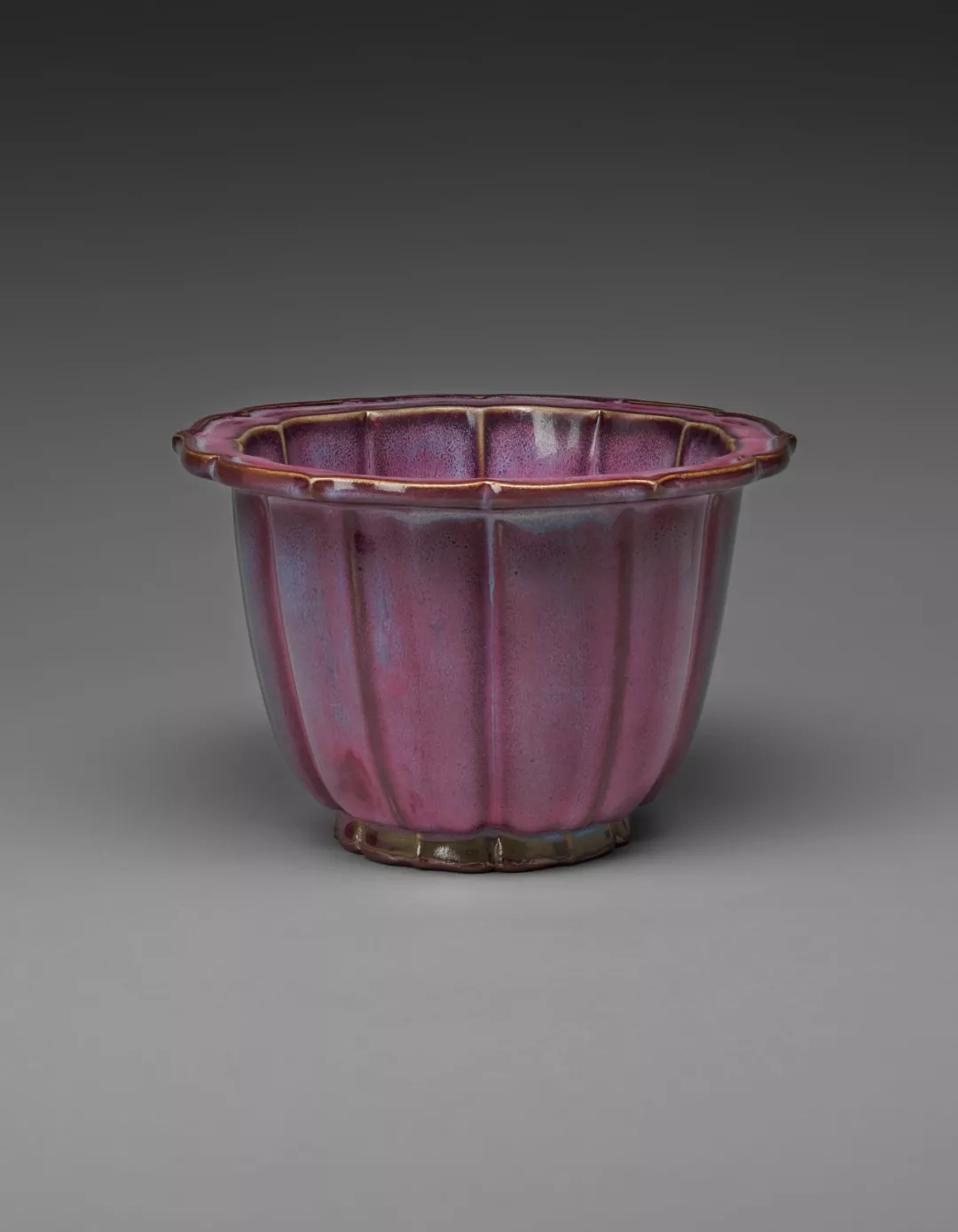
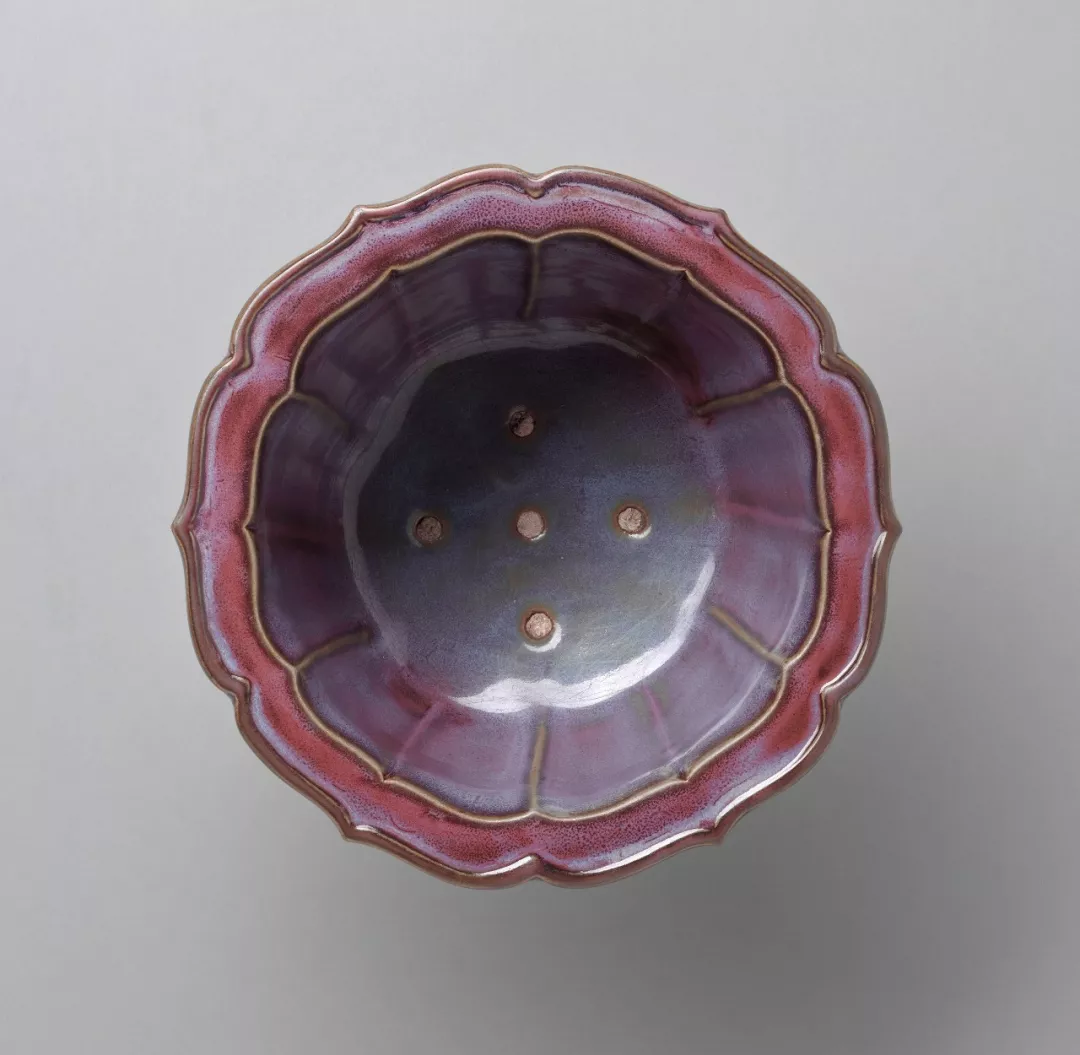







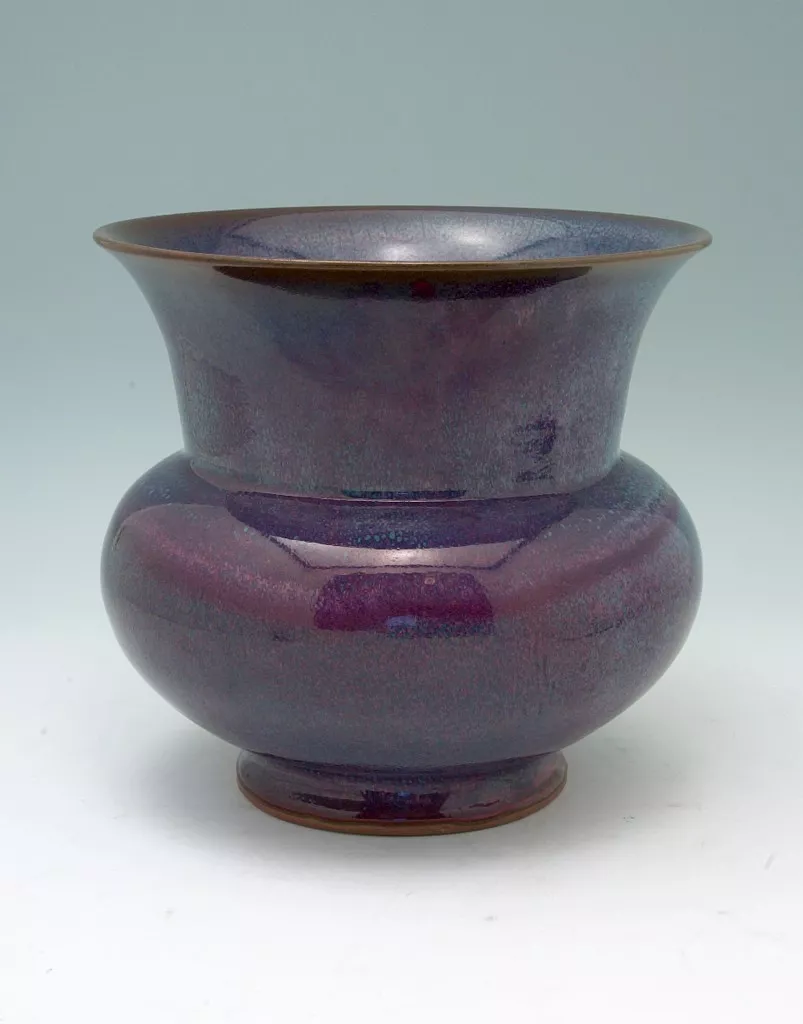
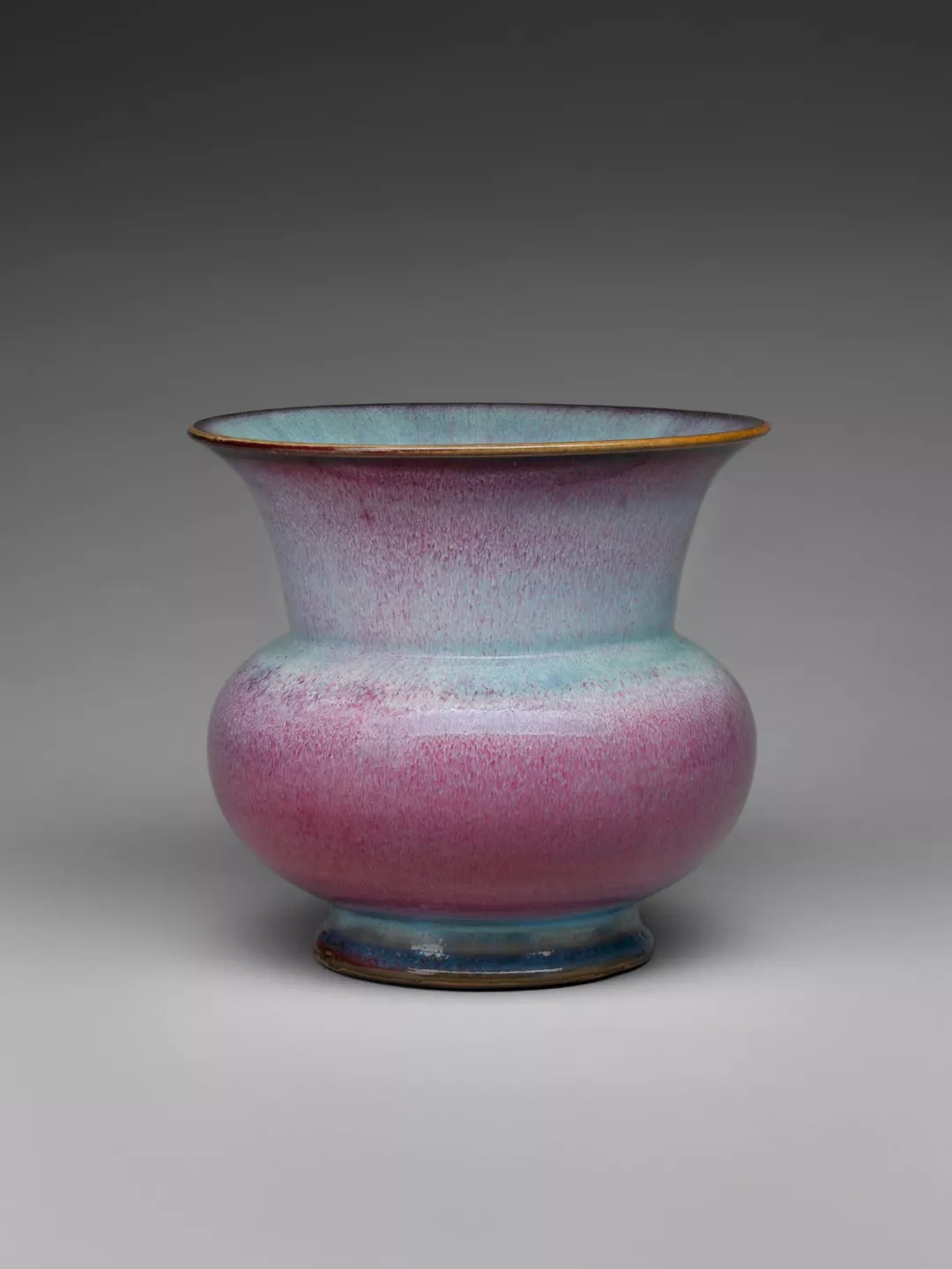
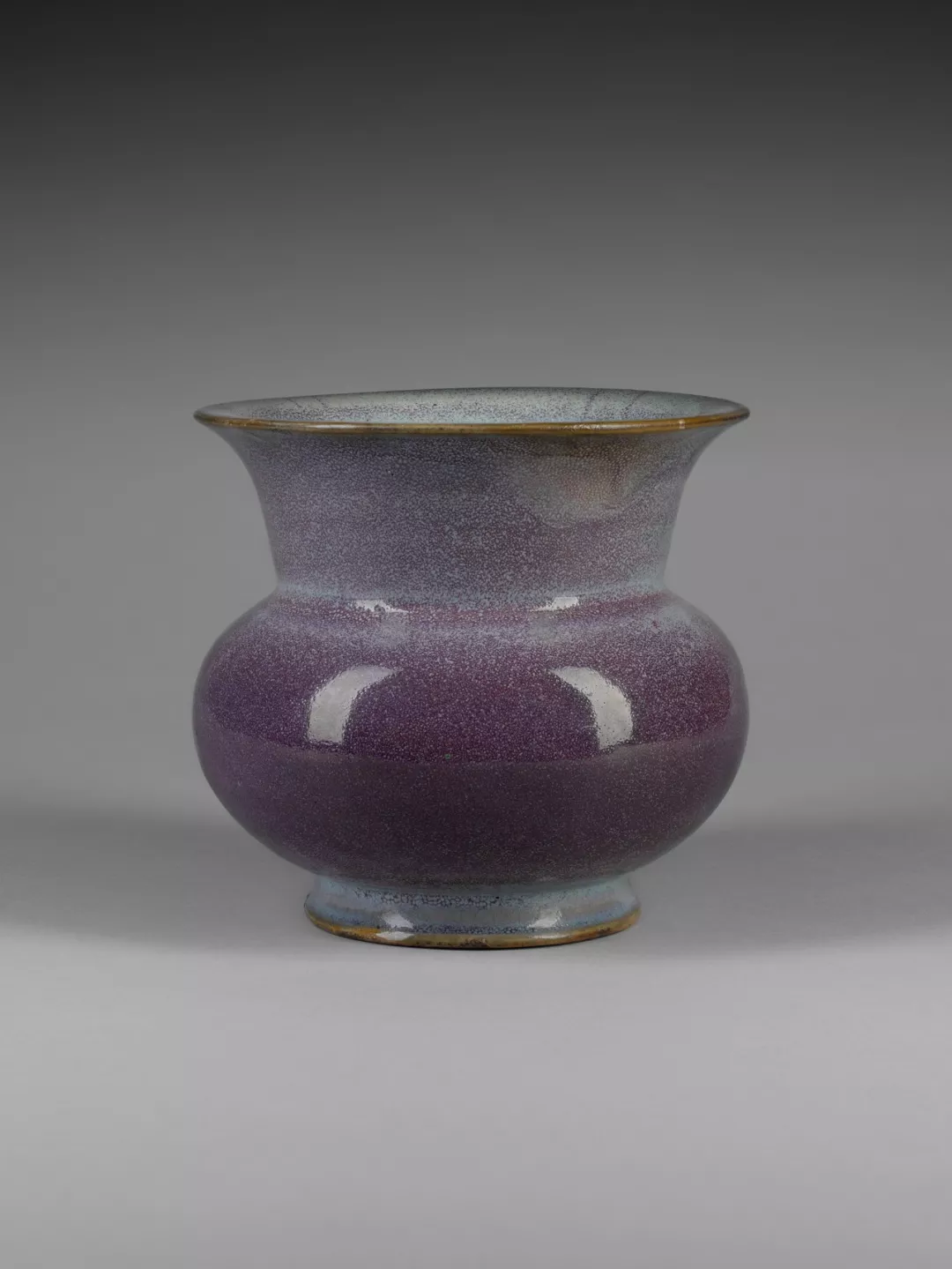
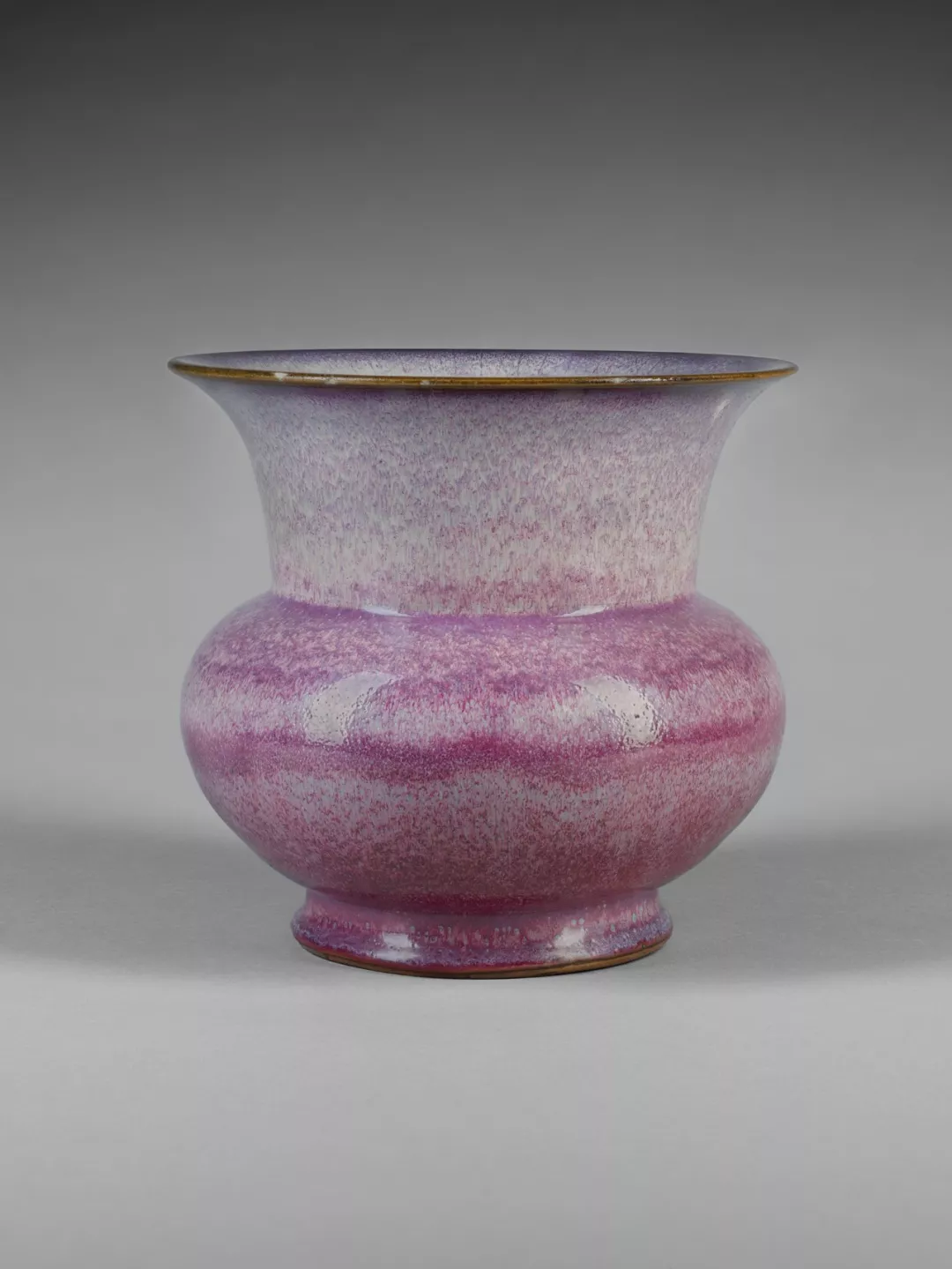
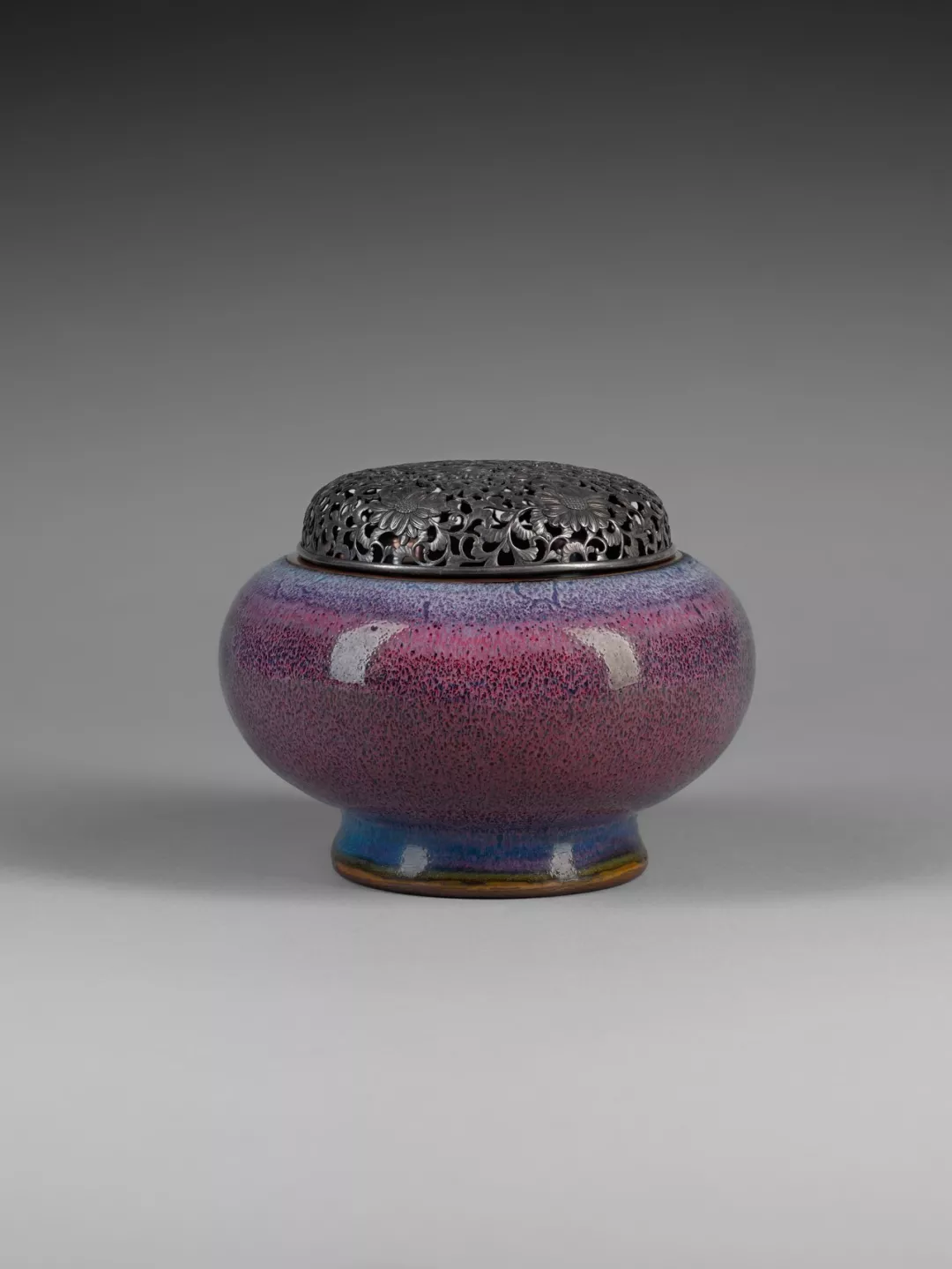
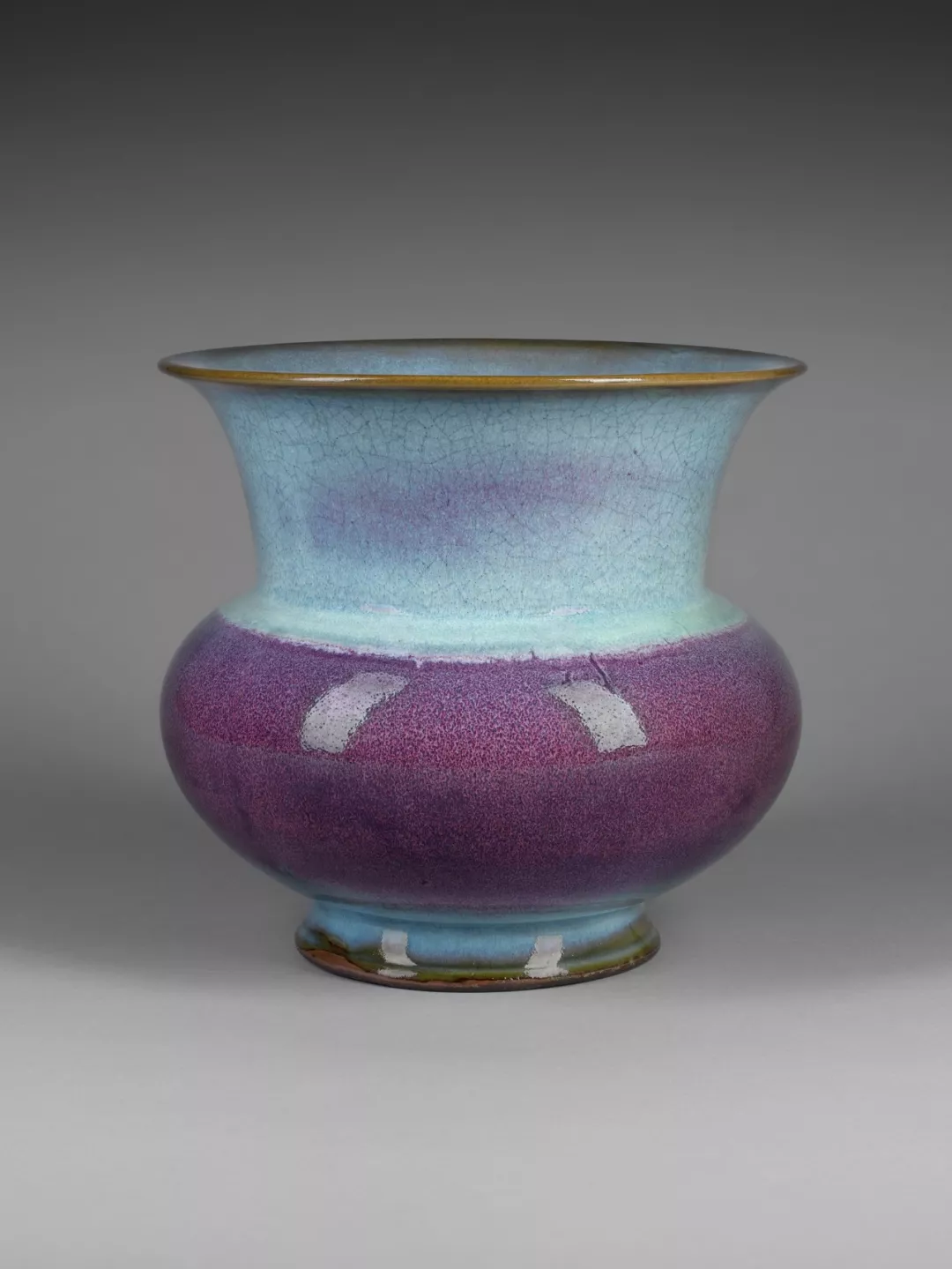






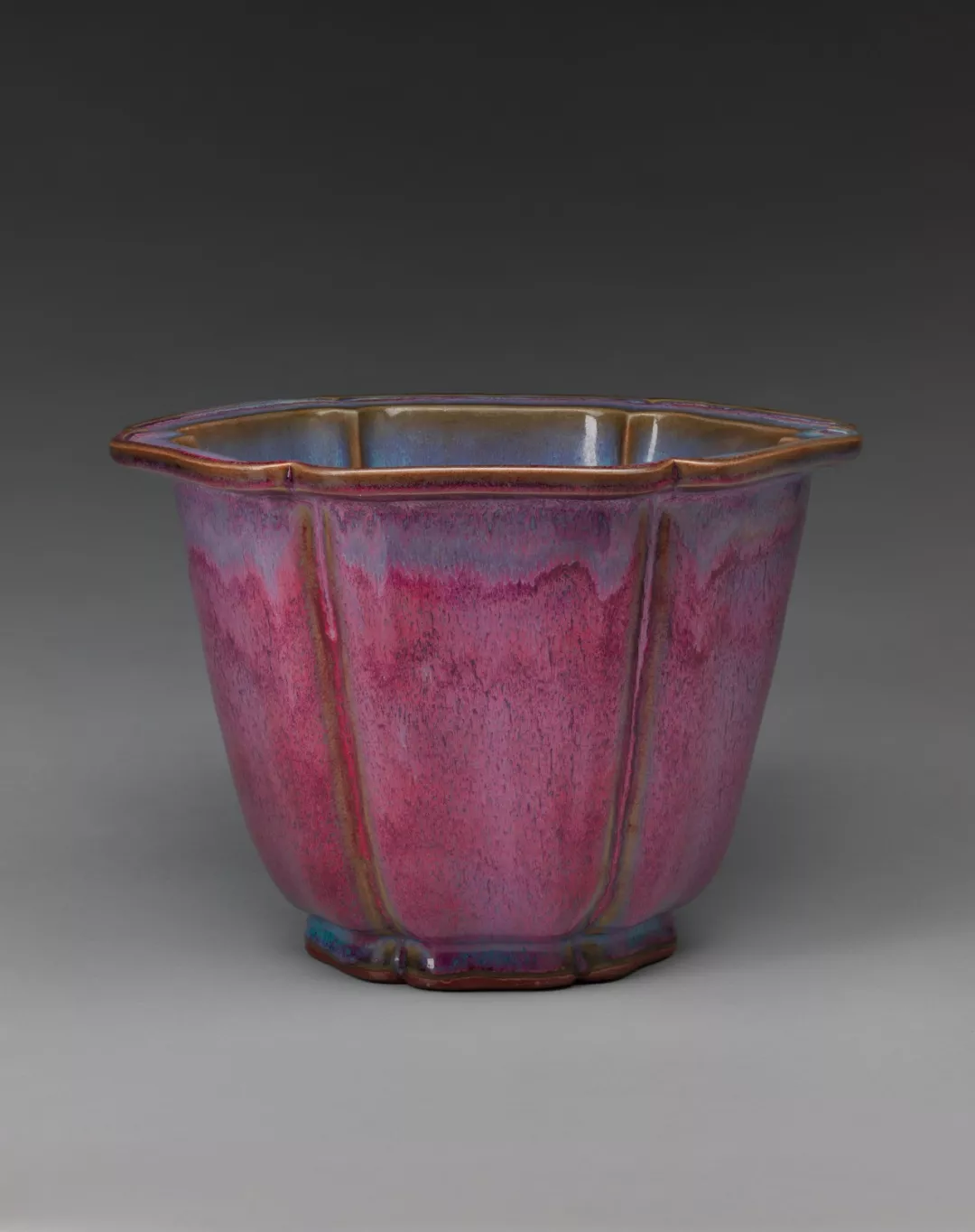
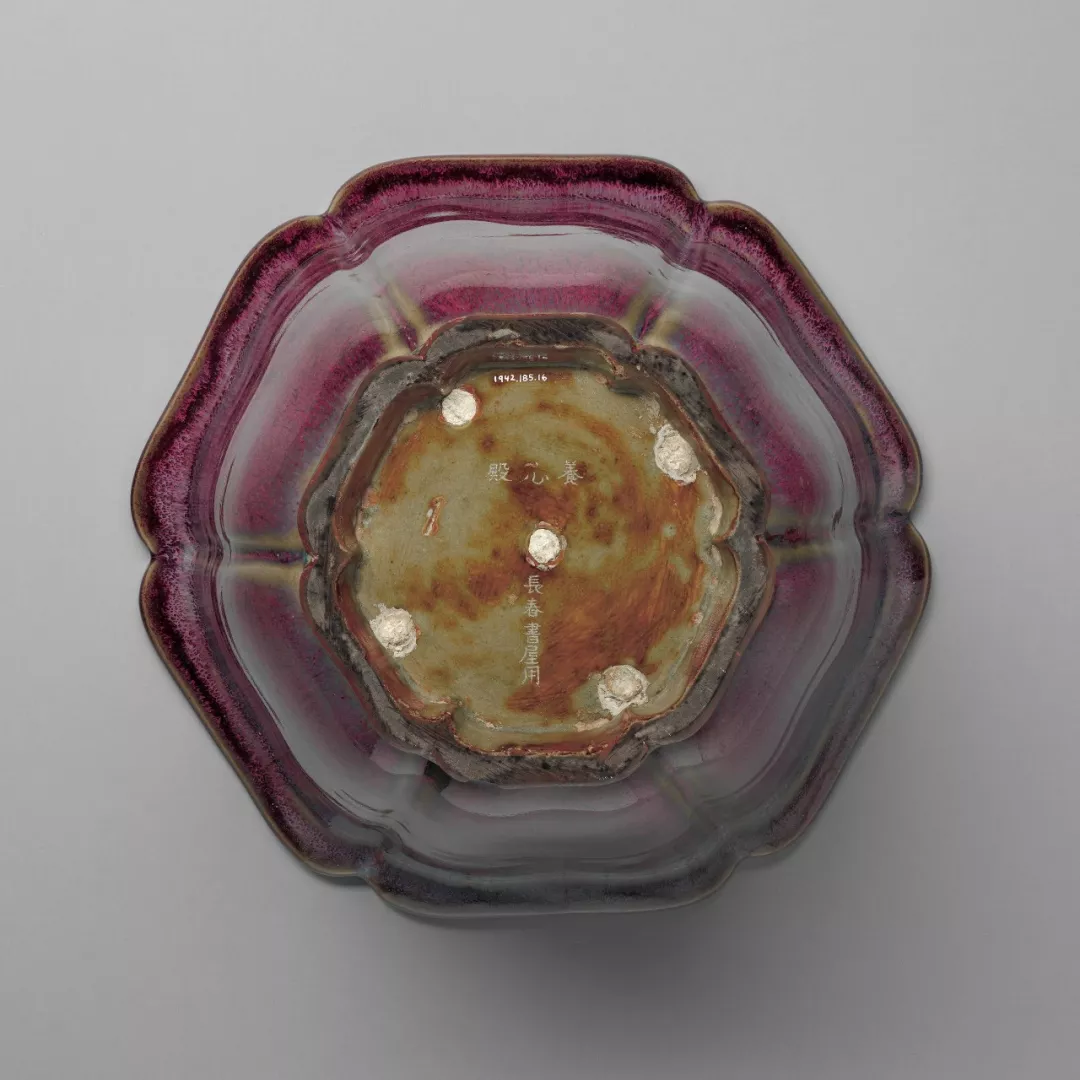
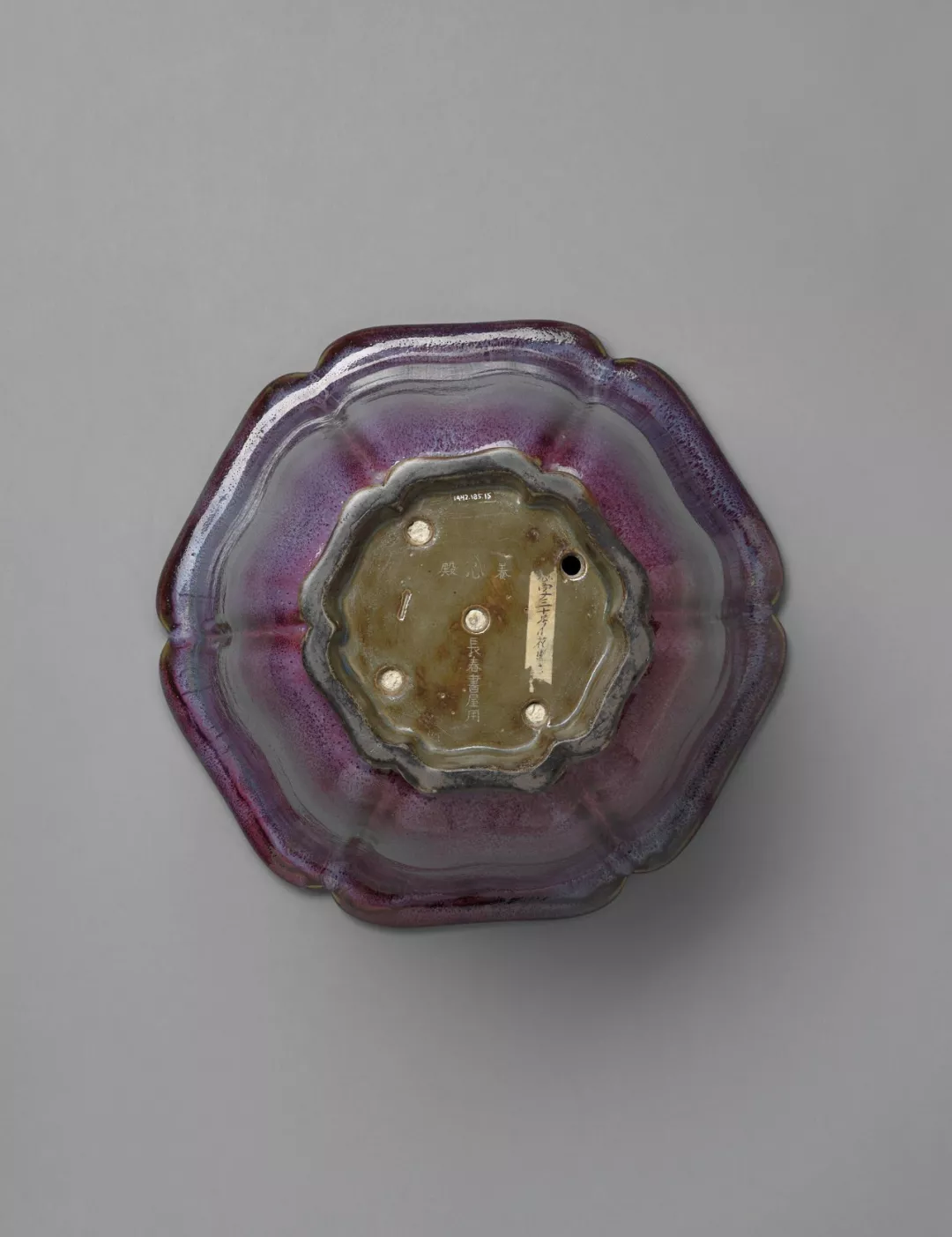
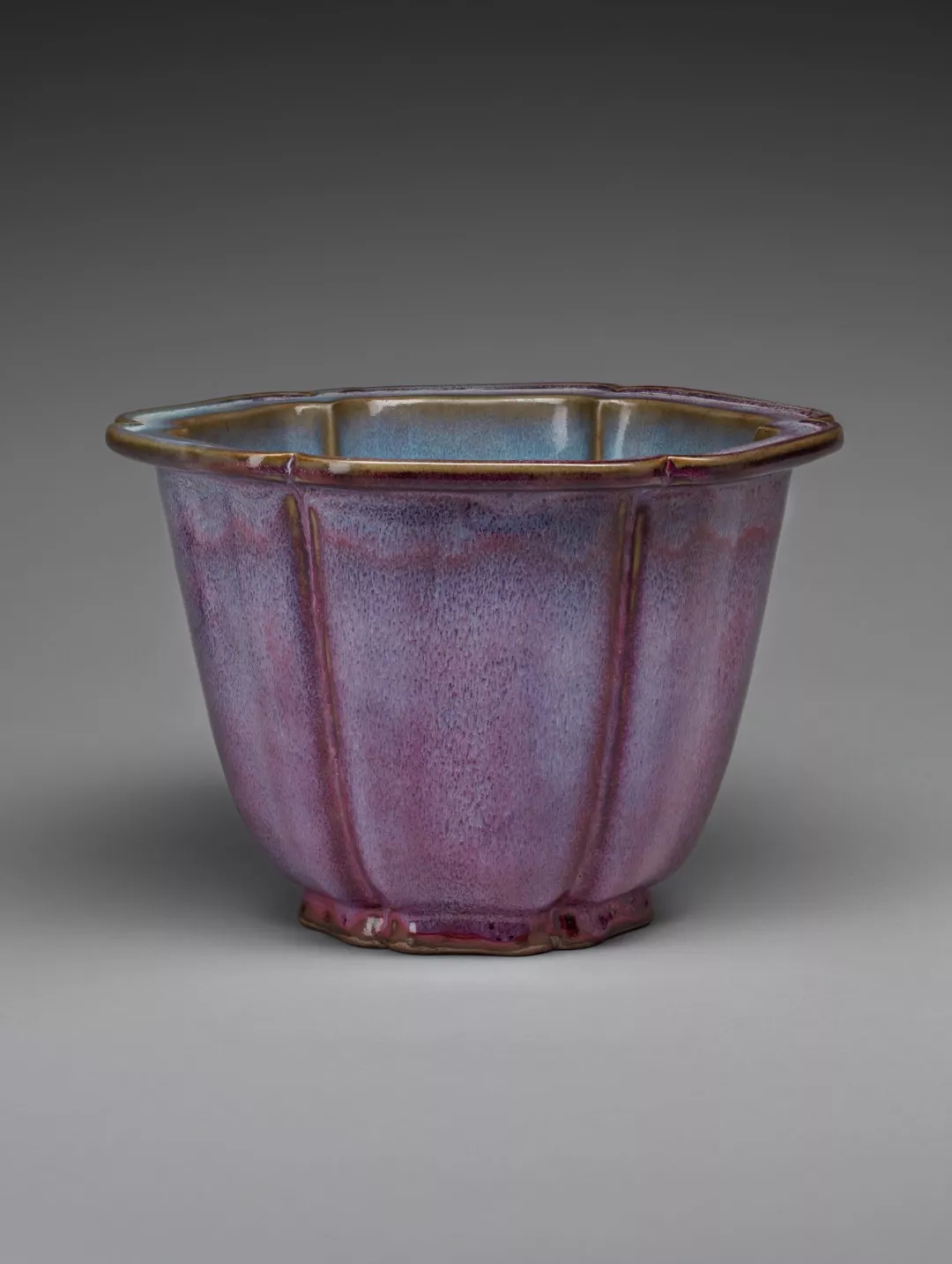
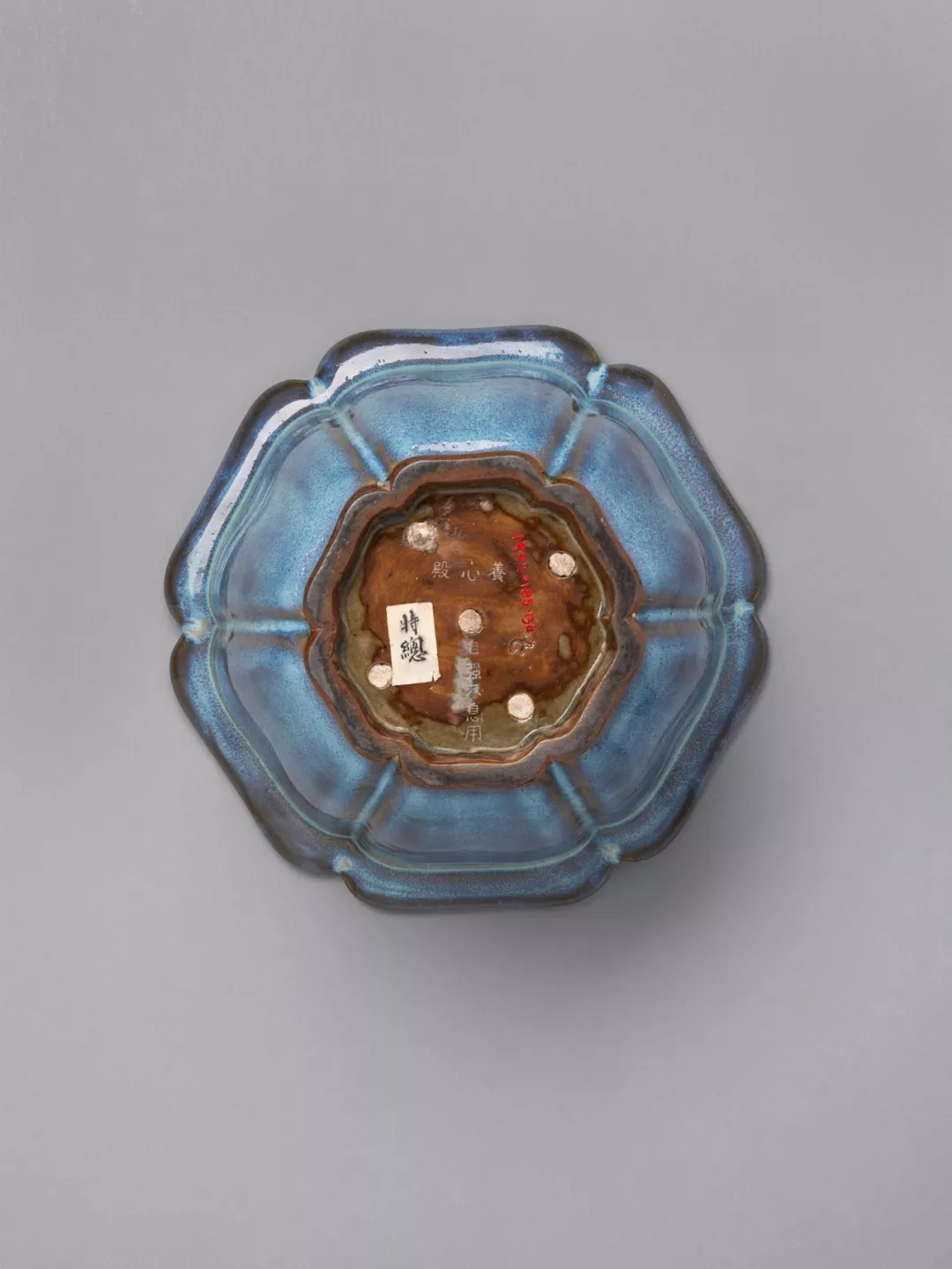
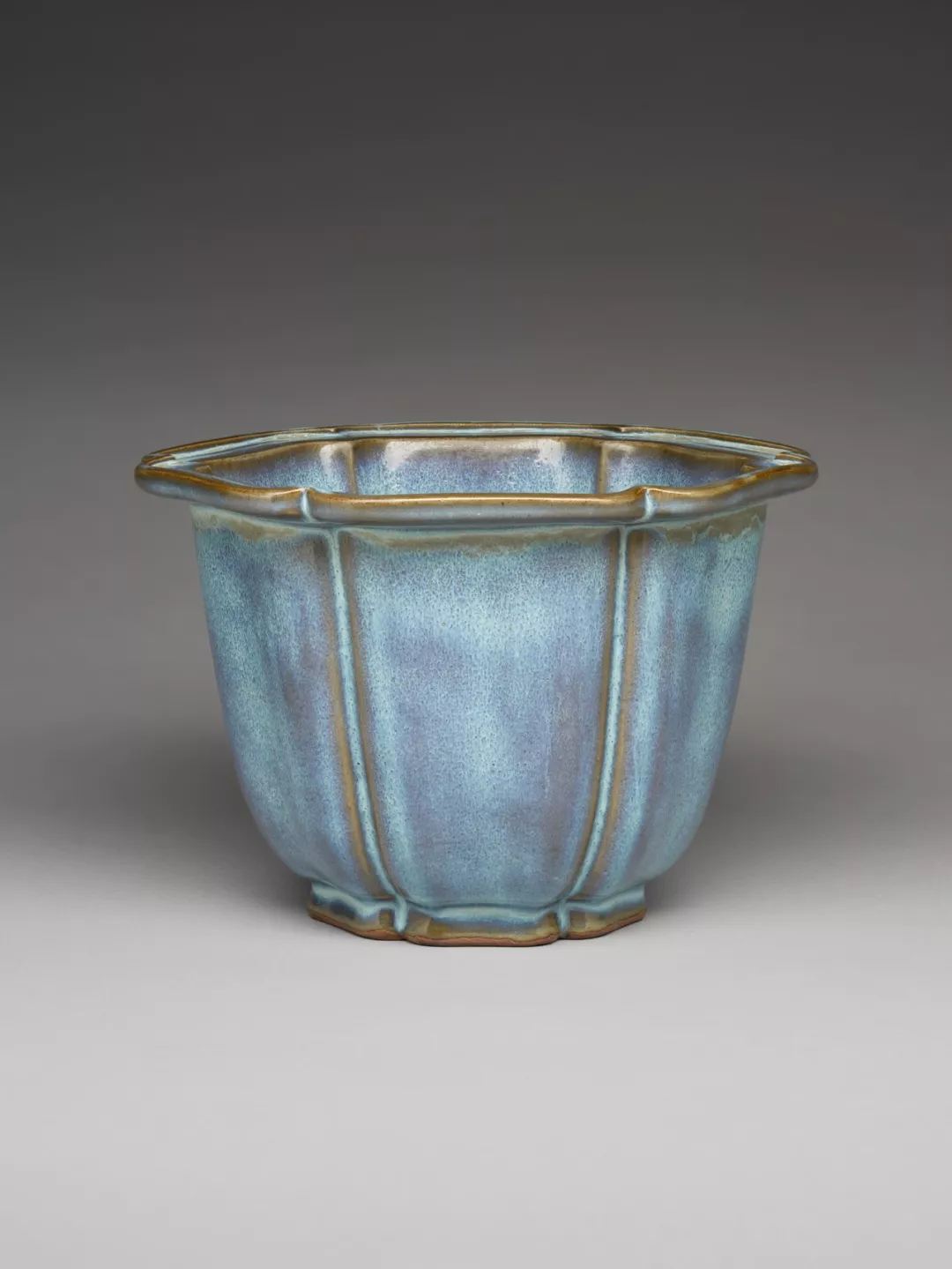
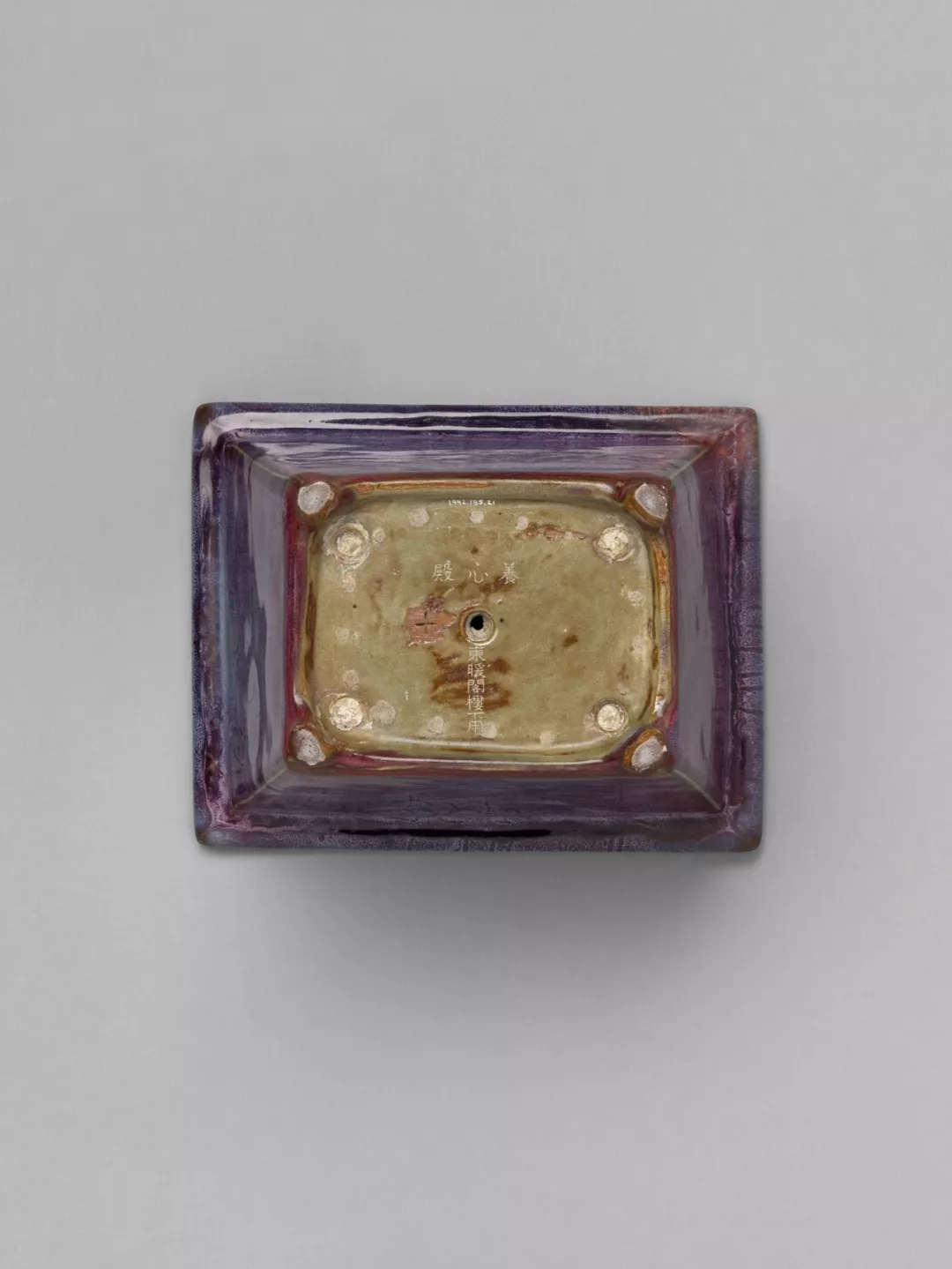
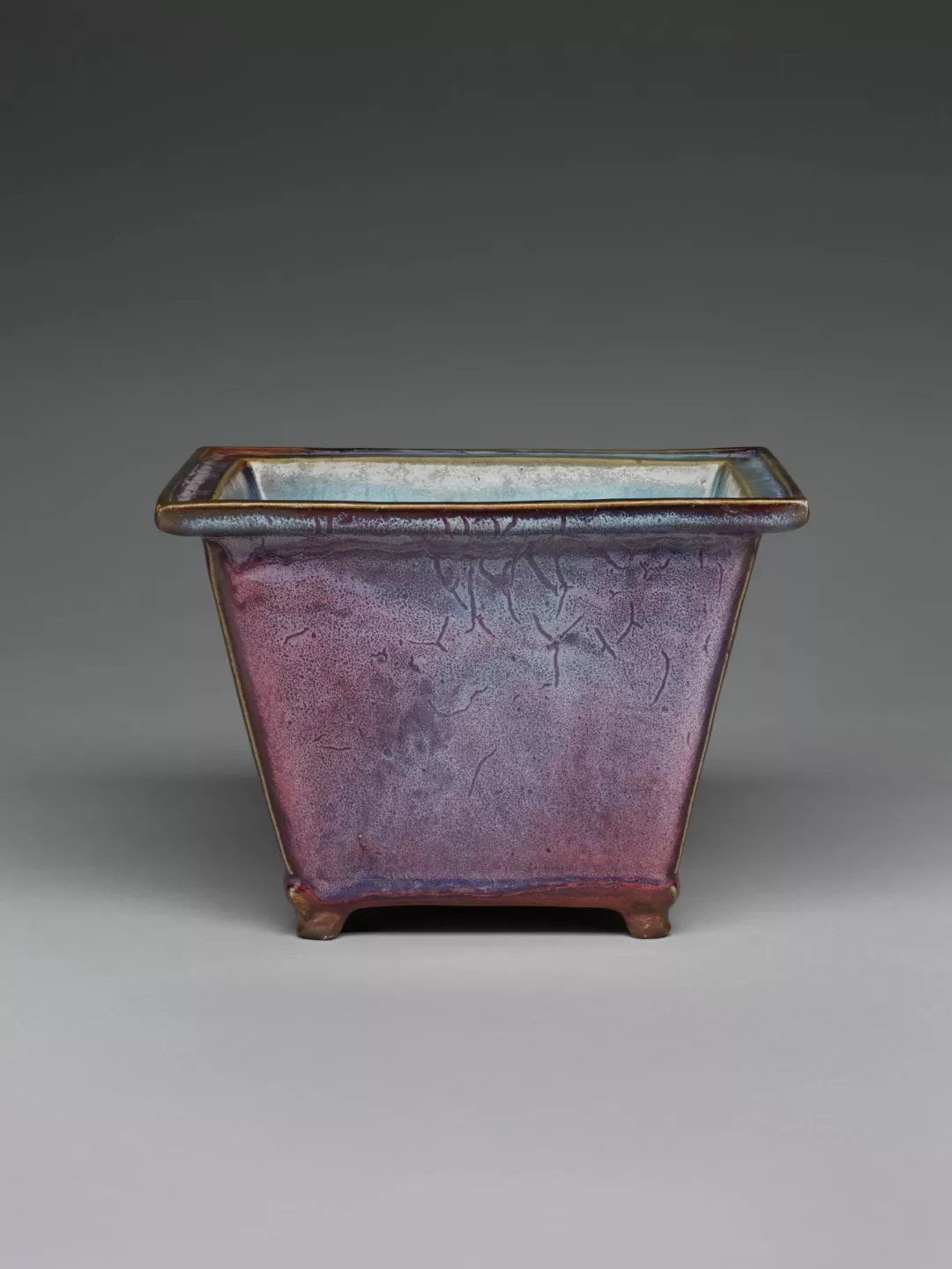
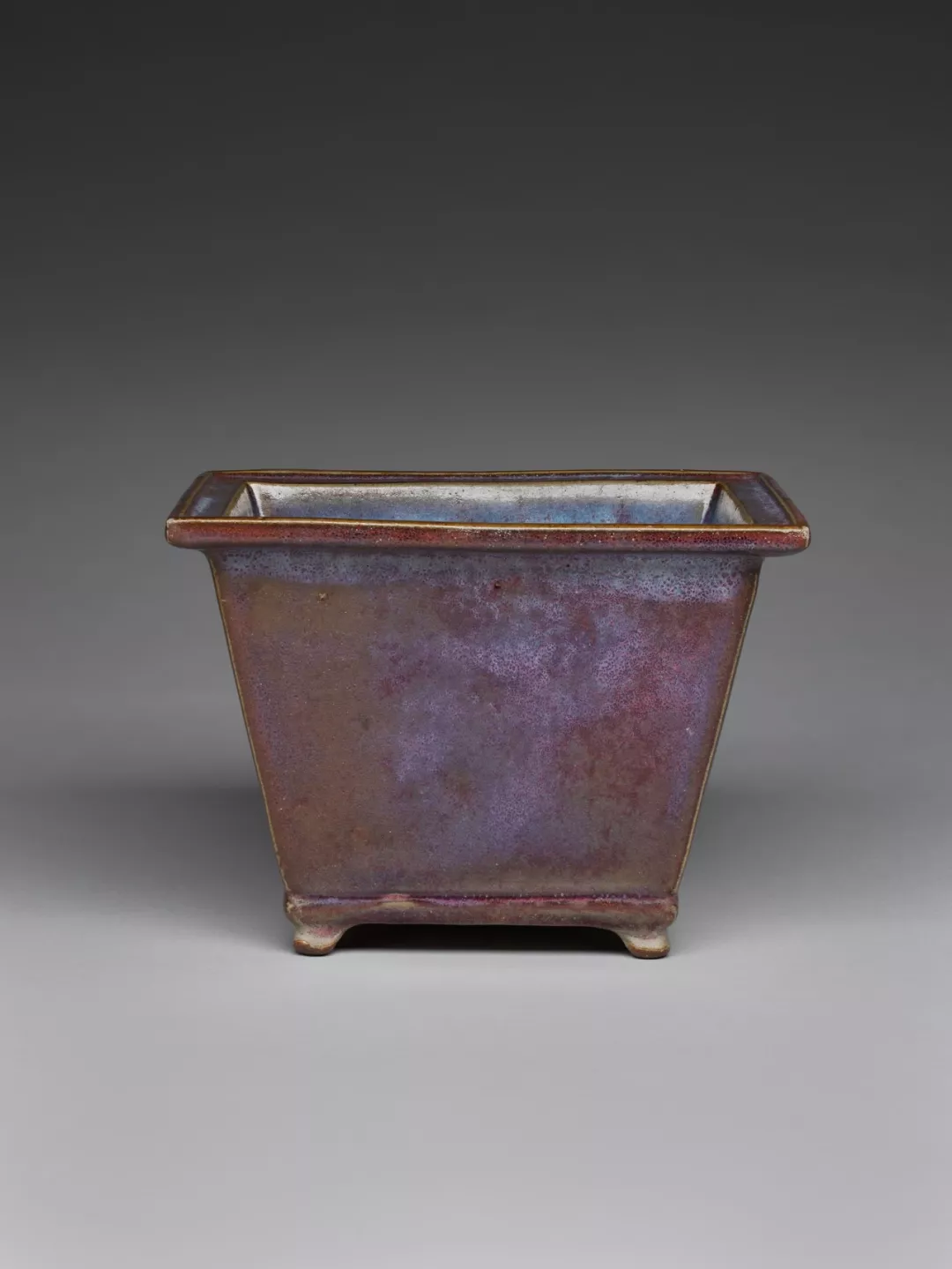
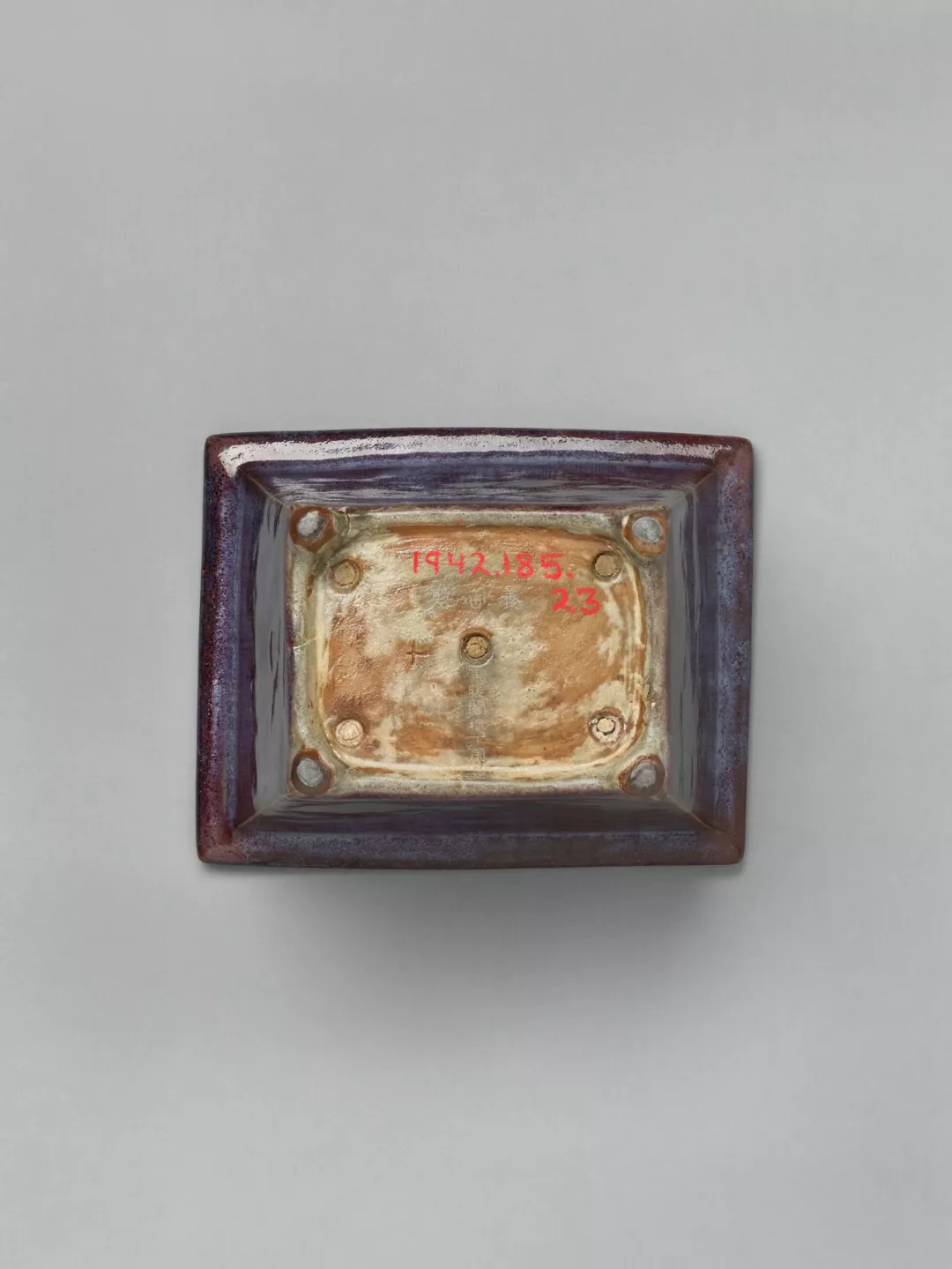
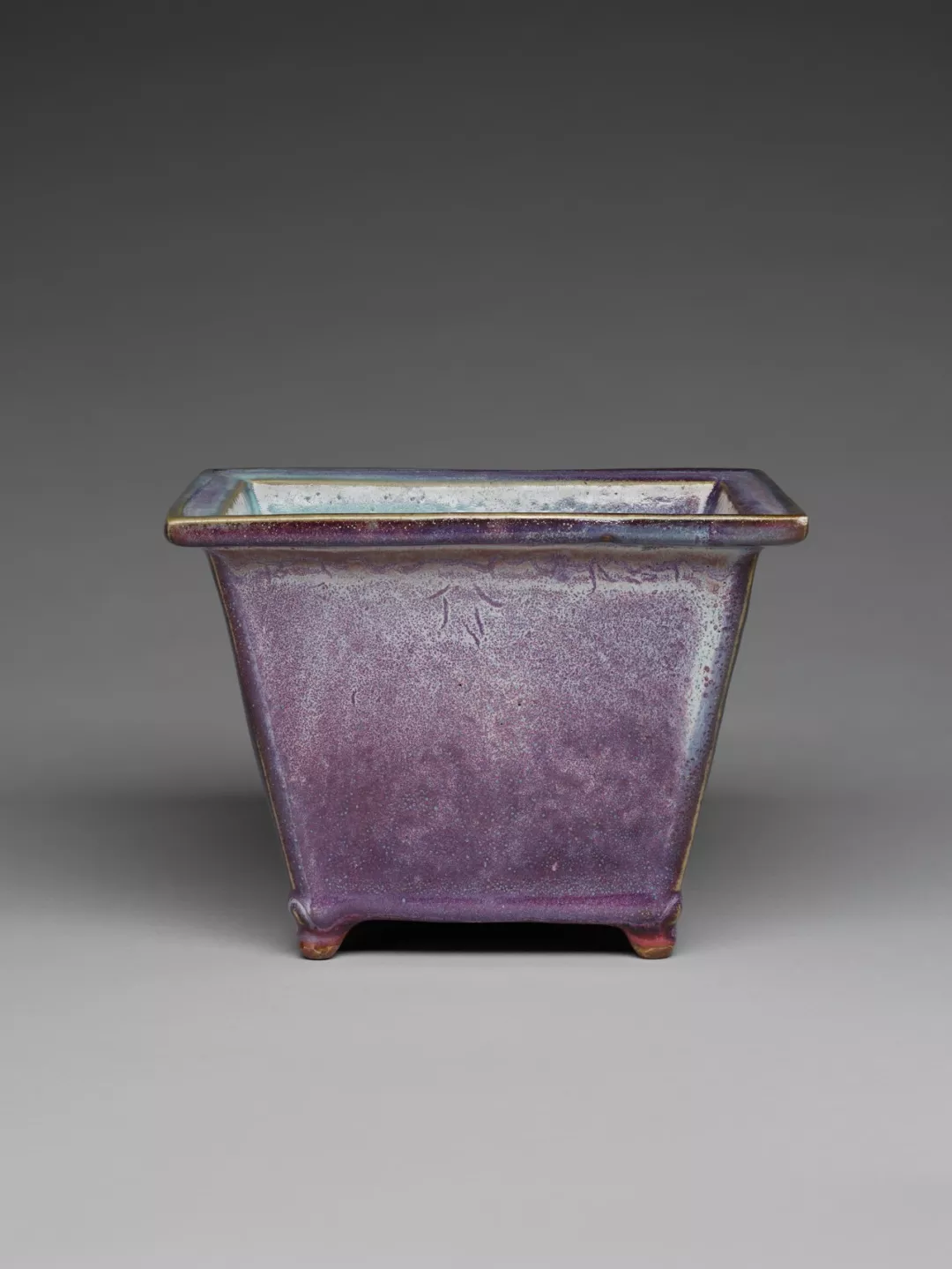
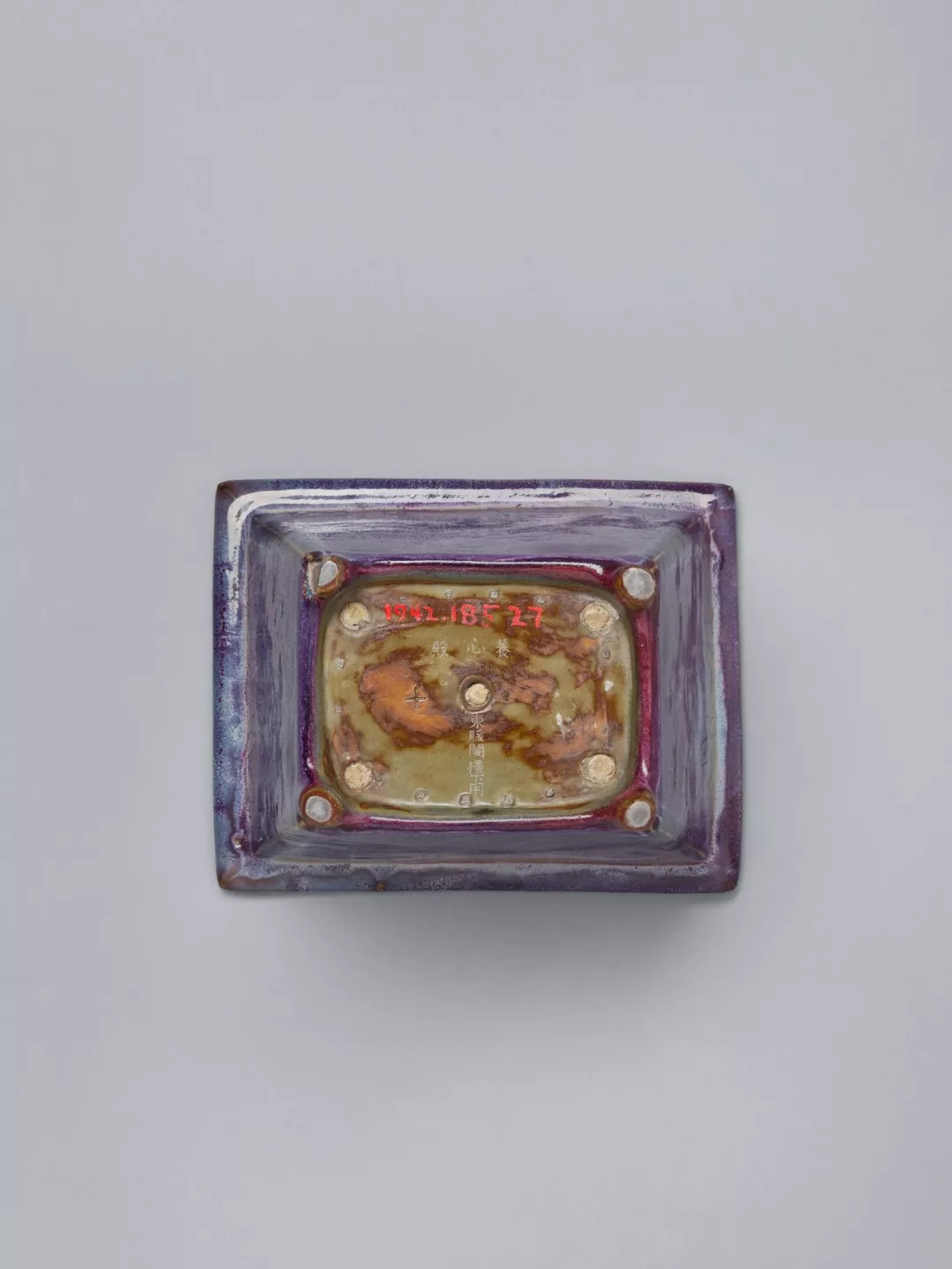













耿寶昌老師太可愛了,天真浪漫。